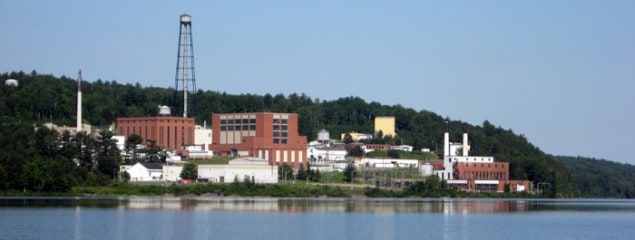
A report from the US National Academies of Sciences, Engineering and Medicine (NAS) warns that the US could be facing severe shortages of the vital medical isotope technetium-99m once the ageing NRU nuclear reactor in Chalk River, Canada, stops producing molybdenum-99 next month. Technetium-99m, which is derived from the molybdenum-99 isotope, is widely used for medical imaging.
Released this week, the report was commissioned by the US Congress and warns that there is a greater than 50% chance that severe shortages of molybdenum-99 and technetium-99m will occur in the US after the NRU stops production in October. Both isotopes have very short half-lives and cannot be stockpiled. While global supplies of molybdenum-99 are produced at six other reactors worldwide, most of these facilities are also very old and some are prone to unscheduled shutdowns.
Only North American source
Built in 1957, the NRU reactor has shut down unexpectedly twice in the past decade. It is the only source of molybdenum-99 in North America. Although both the US and Canada are developing accelerator-based facilities to produce the isotope, some of them are not expected to come online until 2018. The lack of molybdenum-99 production in the interim from the NRU reactor means that the supply of technetium-99m to the US could be vulnerable, warns the NAS report. NRU will, however, keep running until 2018 and could be called back into service if there is a shortage of technetium-99m.
About 75% of molybdenum-99 produced worldwide is made by irradiating targets that are highly enriched in uranium-235, which is a “weapons grade” material. Worries about potential terrorism and nuclear proliferation have led to a programme to convert production facilities so they can use targets with a much lower level of enrichment. Although all existing reactors could all be converted by 2019, the NAS report warns that delays or problems with the conversion process could also lead to shortages of technetium-99m.
Overseas production
“Current efforts to increase the supply of molybdenum-99 by expansion of existing overseas production and initiation of domestic production by methods not requiring highly enriched uranium are important to ensure future availability,” says medical biophysicist James Adelstein at Harvard Medical School, who chaired the 13-person committee that produced the report.
“Although there are plans from both existing international suppliers and potential domestic suppliers to fill the expected supply gap from Canada,” he adds, “the committee is concerned that any delays in bringing additional supplies of molybdenum-99 to the market would increase the risks of substantial shortages”.



